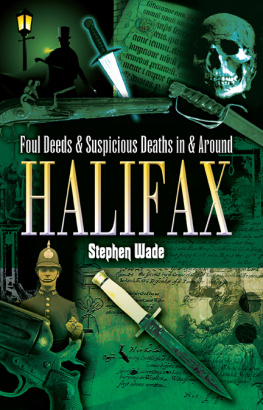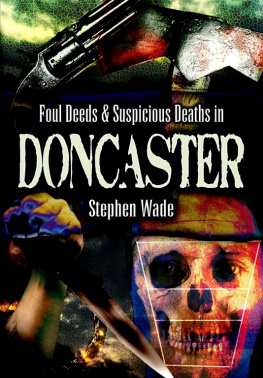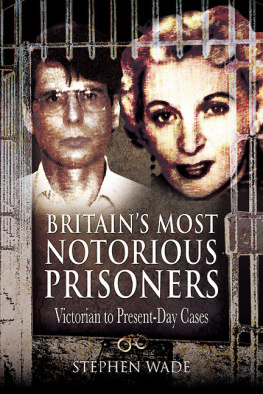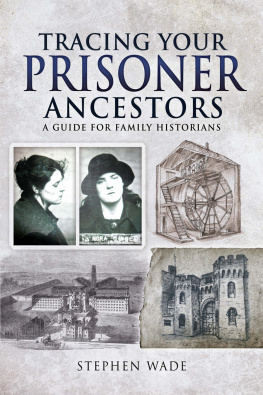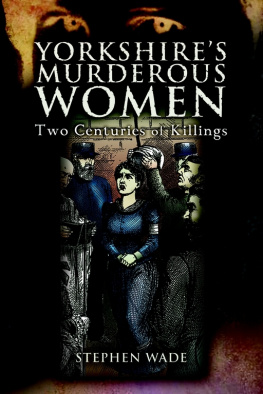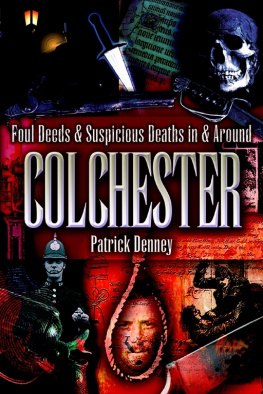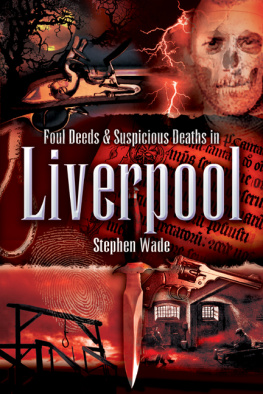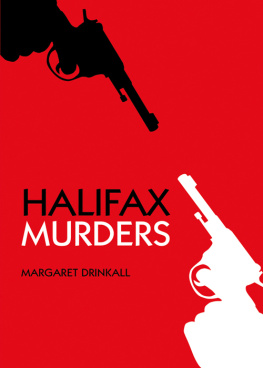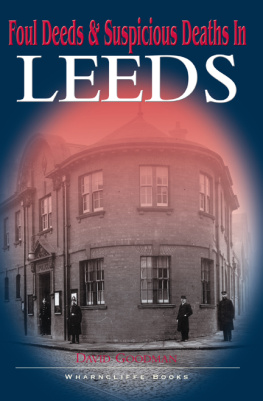FOUL DEEDS AND SUSPICIOUS DEATHS Series
Foul Deeds and Suspicious Deaths series explores in detail crimes of passion, brutal
murders, grisly deeds and foul misdemeanours. From Victorian street crime, to more
modern murder where passion, jealousy, or social depravation brought unexpected
violence to those involved. From mysterious death to murder and manslaughter, the
books are a fascinating insight into not only those whose lives are forever captured by
the suffering they endured, but also into the society that moulded and shaped their
lives. Each book takes you on a journey into the darker and unknown side of the area.
Other titles in the series
Foul Deeds and Suspicious Deaths in Blackburn & Hyndburn, Stephen Greenhalgh
1 903425 18 2 . 9.99
Foul Deeds and Suspicious Deaths In and Around Chesterfield, Geoffrey Sadler
1 903425 30 1 . 9.99
Foul Deeds and Suspicious Deaths In Leeds,David Goodman
1 903425 08 5 . 9.99
Foul Deeds and Suspicious Deaths In Nottingham, Kevin Turton
1 903425 35 2 . 9.99
Foul Deeds and Suspicious Deaths In and Around Rotherham, Kevin Turton
1 903425 27 1 . 9.99
Foul Deeds and Suspicious Deaths In and Around The Tees, Maureen Anderson
1 903425 26 3 . 9.99
Foul Deeds and Suspicious Deaths In Wakefield, Kate Taylor
1 903425 07 7 . 9.99
More Foul Deeds and Suspicious Deaths In Wakefield, Kate Taylor
1 903425 48 4 . 9.99
Foul Deeds and Suspicious Deaths In York, Keith Henson
1 903425 33 6 . 9.99
Foul Deeds & Suspicious Deaths on the Yorkshire Coast, Alan Whitworth
1 903425 01 8 . 9.99
Other Local Books
The Making of The West Yorkshire Landscape, Anthony Silson
1 903425 31 x . 9.99
Trams Around Dewsbury & Wakefield, Norman Ellis
1 903425 40 9 . 9.99
Please contact us via any of the methods below for more information or a catalogue.
WHARNCLIFFE BOOKS
47 Church Street Barnsley South Yorkshire S70 2AS
Tel: 01226 734555 734222 Fax: 01226 734438
E-mail:

First Published in 2004 by
Wharncliffe Books
an imprint of
Pen and Sword Books Limited,
47 Church Street, Barnsley,
South Yorkshire. S70 2AS
Copyright Stephen Wade, 2004
For up-to-date information on other titles produced under the
Wharncliffe imprint, please telephone or write to:
Wharncliffe Books
FREEPOST
47 Church Street
Barnsley
South Yorkshire S70 2BR
Telephone (24 hours): 01226 - 734555
ISBN: 1-903425-45-X
PRINT ISBN: 9781903425459
PDF ISBN: 9781783037841
EPUB ISBN: 9781783037865
PRC ISBN: 9781783037858
All rights reserved. No part of this publication may be
reproduced, stored in a retrieval system, or transmitted, in
any form or by any means, electronic, mechanical,
photocopying, recording or otherwise, without the prior
permission in writing of the publishers.
This book is sold subject to the condition that it shall not,
by way of trade or otherwise, be lent, resold, hired out or
otherwise circulated without the publishers prior consent in
any form of binding or cover other than that in which it is
published and without a similar condition including this
condition being imposed on the subsequent purchaser.
A CIP catalogue record of this book is available from the
British Library
Cover design: Jonathan Wilkinson
Printed in the United Kingdom by
CPI UK
Contents
Introduction
After spending many hours looking through old newspapers, works by antiquarians, local histories from the various corners of the parish of Halifax, I have to explain the resulting reflections as again a confirmation of the stunning and enigmatic nature of murder in human communities. This is an easy conclusion to reach after reading such cases as that of Frederick Brett in 1889. Brett, a railway worker, in a drunken state, suspected his wife of infidelity, and slit her throat with a small pen-knife. When Brett was arrested, he simply said that he was only playing at Jack the Ripper.
This was one more of those pathetic copy-cat crimes, we might think. But murder cases are never that simple, because they are often the outcome of a long and painful failure either in a particular relationship or in the impossibility of an individual to know him or herself honestly. As Shakespeare said of King Lear in his destructive folly: He hath ever but slenderly known himself. These sad cases of killings outside public houses, men possessed by jealousy, or murders done for a few pounds mostly have these human stories, with the same appeal to the reader as that of crime fiction.
The sources of these stories in Halifax have been difficult to find, but that is part of the pleasure of writing True Crime. The normal source is in the inquest books of coroners; yet in the case of Halifax parish, the West Riding coroner, Thomas Taylor, did not record anything. It seems to be an area overlooked in this context. However, Halifax is rich in another source for historiography: it has a thriving Antiquarian Society and a host of amateur historians with a profound local pride and a strong interest in the industrial and social history of Calderdale.
Is Halifax an unusually murderous place? No more than any other Yorkshire town burgeoning during the heyday of the Industrial Revolution. But most people will be familiar with the old saying: From Hell, Hull and Halifax, Good Lord deliver us. Halifax is there in that alliterative statement largely because of the Gibbet. As the editor of a journal in Victorian times said, The list of executions under the Gibbet Law at Halifax was so formidable that there is no reason to wonder at the proverbial petition of thieves and vagabonds.
The town has its dark and dismal topography, as do all West Riding towns with so much industrial history; it abounds in alleys, courts, ginnels and garths places that a modern sociologist might define as being lacking in defensible space. In other words, there are places with really menacing atmosphere, and these clearly proliferated as industrial and commercial premises were squeezed into these tight valleys. As you drive into Halifax from the M62 near Huddersfield, you pass Southowram, and see the huge hilly ridge on your right, with isolated farmhouses and distant dwellings, reminding you that Emily Bronte's Wuthering Heights was set just a few valleys away to the north.
Even in legends going back to the medieval period, violence is associated with the place: one story of the origin of the name includes a certain evil clerk who cut off the head of a saintly maiden, and hung it on a yew tree, where it was greatly revered. The fibres beneath the bark of the tree were held to be the long hair of the maiden, and pilgrims visited the yew, calling it holy hair. By Victorian years, the hard and extreme acts of punishment maintain this tough image: John Turner was tried at York and transported for ten years; Mary Thompson, aged twenty-one, was put away for ten years for robbing a Leeds man of seven shillings and sixpence. Poor Martin Maguire was transported for fourteen years for burglary.
But, despite the desperate social problems of these earlier times, and the forbidding geography around the town, Calderdale is very beautiful. Phyllis Bentley, the famous novelist, wrote a long essay on Romantic Halifax and mentions an old statement that Halifax people were rude and arrogant, only to displace this with an insistence that it is lovely country, with sweeping, interlocking hills, narrow winding valleys, sloping fields of rough grass When William Wordsworth's sister, Dorothy, was in the town in the 1780s, Robert Gittings notes that Halifax was still a country town, the first worsted mill was not opened until 1787 and the population at the 1801 Census was still under nine thousand
Next page
